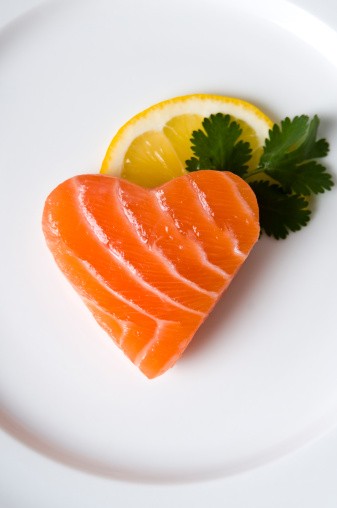Is Stress Holding You Back? Break Free with These Tips
APR 09, 2025Stress is a natural reaction to life's challenges. Practicing mindfulness, staying conntected, and setting boundaries are three effective tips for managing it.
Read More
Whenever I quote the latest recommendation from the American Heart Association (AHA) or the USDA concerning seafood, I am met with the same statement, “I do not like fish”. Sometimes I wonder how this could be true. During the Lenten season, the social halls at the local Catholic Churches are filled with happy customers eating fried or baked fish and all the trimmings. Maybe it is simply that people do not like to prepare and cook seafood at home.
Did you know that the AHA and the USDA recommend eating fish at least twice a week (eight to 12 ounces of seafood per week)? Seafood is low in saturated fat, but a good source of protein and omega-3 fats. I see the eyes rolling now with that statement. Allow me a few sentences in “registered dietitian language” about fish:
The omega-3 family of fats include: alpha-linolenic acid (ALA), eicosapentaenoic acid (EPA), and docosahexaenoic acid (DHA). Some of the best food sources of ALA are: ground flaxseed, walnuts, canola oil, soybeans, soybean oil, and leafy greens. The human body can convert this fat into DHA and EPA, but it is not an efficient conversion so the amounts are lower than from seafood.
With seafood, the fish eat algae containing ALA then covert it to EPA and DHA. The fish has done the work for us! That is why seafood is the best source of omega-3 fats.
The benefits to eating fish (and they are important benefits) include: lowering triglyceride levels, tamping down inflammation, reducing the risk of abnormal heart rhythms, and slowing the buildup of plaque in the arteries.
Not yet convinced that eating fish is a health-promoting choice?
The next question I am asked frequently is, “Doesn’t it contain mercury”? There is the catch. Mercury occurs naturally in the environment and also can be released into the air through industrial pollution. Larger fish that live a long time have the highest levels of methylmecury. Swordfish, shark, king mackerel, and tilefish have higher levels of methylmercury. Avoid eating them.
Tuna is controversial. It is a large fish with a long life span. Albacore (white) tuna has more mercury than canned light tuna. Tuna steak contains higher levels of mercury than canned light tuna or light tuna in a pouch. Because of the methylmercury content of this fish, the FDA recommends intake of only six ounces per week of albacore tuna or tuna steak for pregnant or nursing moms and young children (learn more about fish consumption advisories).
Most of the commonly eaten seafood are low in mercury: wild or Alaskan salmon, shrimp, pollock, catfish, canned light tuna, sardines, sole, scallops, perch, tilapia, halibut, arctic char, trout, and Pacific cod.
Seafood is best prepared by grilling, roasting, poaching, or stir frying. Using lemon pepper, dill, salsa, fruit salsa, or a sweet or spicy glaze will provide flavor to your fish serving. I have included the following citrus ginger glaze recipe easy to prepare, and it adds flavor to fish fillets. Canned light tuna or salmon prepared as a salad with light or fat free mayonnaise or salad dressing is also an easy way to achieve two fish servings per week.
Do your best to promote your health. Go fish at a local lake or at your favorite grocery store.
Citrus Ginger Glaze
This recipe is quick and easy. It will add flavor to fish fillets or grilled chicken breasts. If you prefer, this sweet tangy glaze can become spicy with a dash of hot pepper flakes or Tabasco sauce.
Combine all ingredients in a small saucepan. Bring to a boil. Reduce heat and simmer over low for five minutes or until reduced to one half. Remove from heat.
Coat cooked fish fillet with glaze and serve.
Makes 2 servings
Serving size: about 2 Tablespoons
| Nutritional Content: Calories: 37 Carbohydrate: 9 grams Fiber: 0 Fat: 0 Saturated fat: 0 Trans fat: 0 Protein: 0 Sodium: 1 milligram |

Stress is a natural reaction to life's challenges. Practicing mindfulness, staying conntected, and setting boundaries are three effective tips for managing it.
Read More
Nasal airflow problems can cause difficulty sleeping, trouble breathing during exercise, snoring, changes to your sense of smell, mouth breathing and pain or pressure in your face.
Read More
You know good sleep makes you feel better. But did you know lack of sleep is linked to increased risk of chronic diseases like heart disease and diabetes.
Read MoreWhen you need local health information from a trusted source, turn to the CHI Health Better You eNewsletter.